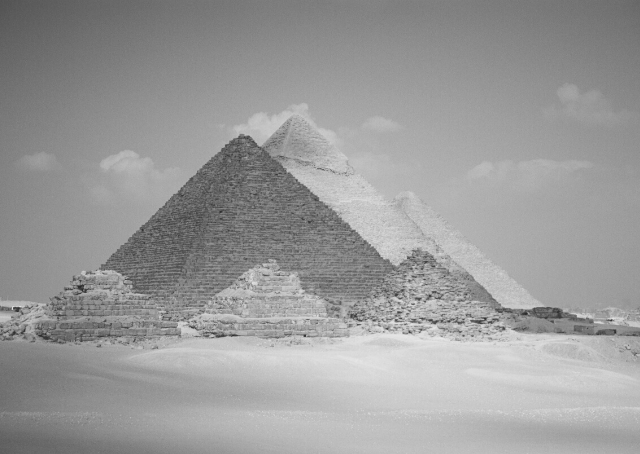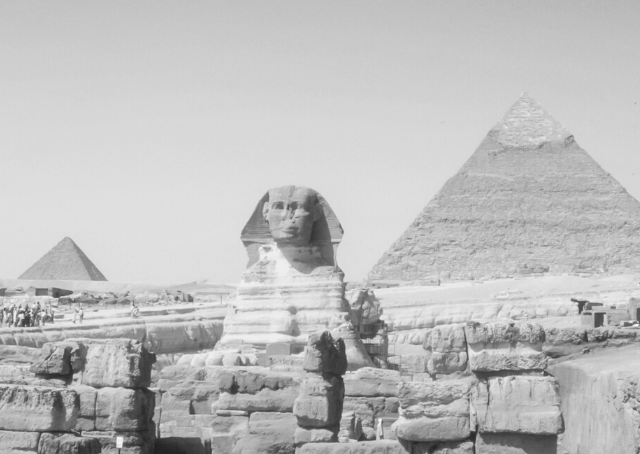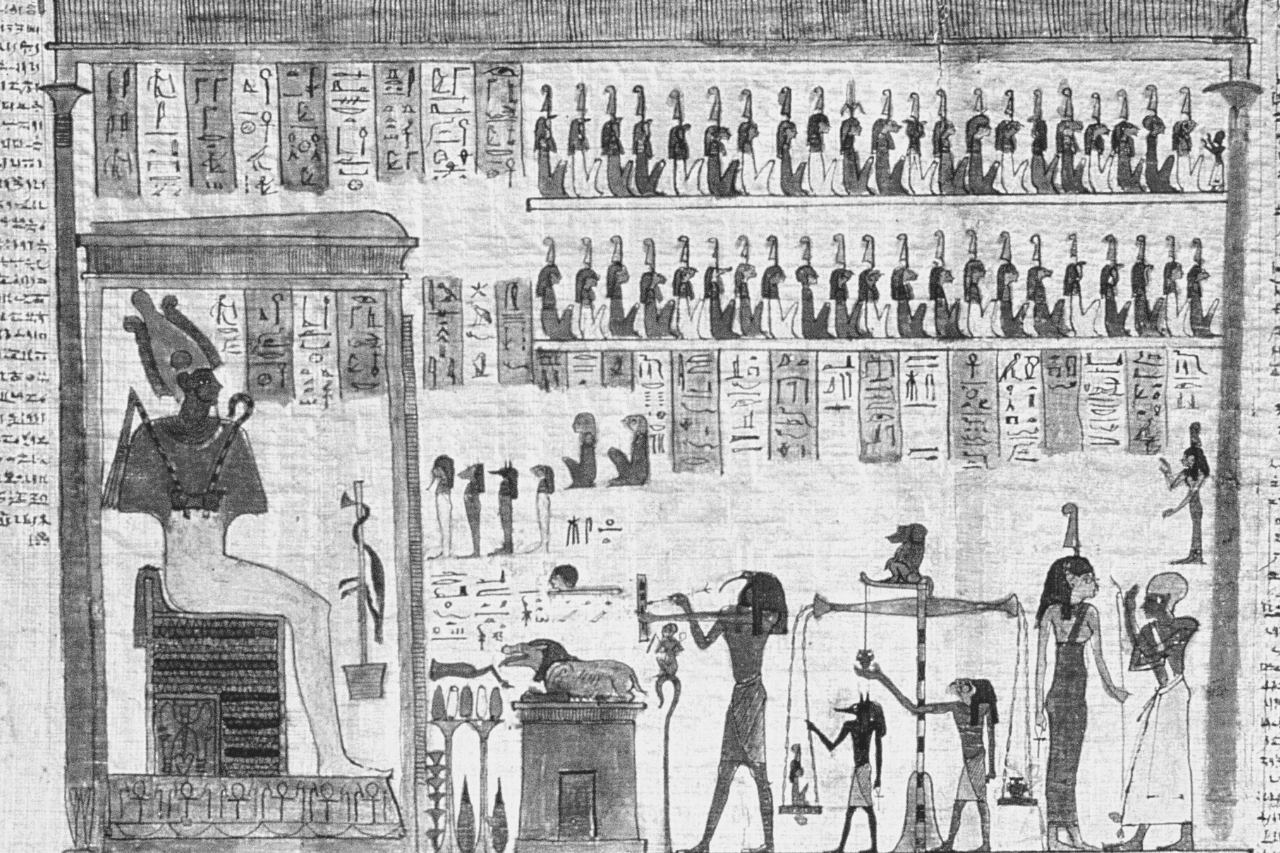Ancient Egypt’s Jobs That Helped Egyptians Build the Pyramids
Ancient Egypt’s jobs and job specializations made it possible to undertake complex engineering projects using only primitive tools.
Ancient Egypt was one of the first civilizations to utilize the division of labor.
In this article, we will explore the fascinating world of Ancient Egypt and how the Egyptians managed to build impressive monuments in the pharaoh’s name.
Thanks to the latest scientific discoveries, we will gain valuable new insight into the inner workings of Ancient Egyptian society.
A Miracle on The Nile: How the Great River Gave Birth to the Egyptian Civilization
The story of the beginnings of human civilization is the story of great rivers. In the valley of great rivers such as the Tigris and the Euphrates in Mesopotamia, Indus in India, and Yellow River in China, the world’s first civilizations sprang up.
However, no other culture had been as closely bound to the river on the banks of which it had emerged as was Ancient Egypt bound to the Nile. The world’s longest river, the Nile, flows more than 4,100 miles from what is today Ethiopia and Kenya to the Mediterranean Sea. Bound by the fierce Sahara Desert to the west and the Eastern Desert to the east.
In the narrow strip of fertile land around the Nile, it was here that Ancient Egyptian civilization emerged in the last two centuries of the third millennium BCE (c. 3200 – 3000 BCE).
The Birth of Agriculture and the Life of Farmers
Ancient Egypt was an agricultural country. All of Egypt’s arable land in those times – as well as in the present day – was located along the Nile. Egyptians grew a variety of crops such as grain, vegetables, and fruits.
The fertility of Egyptian soil depended on the seasonal floodings of the Nile. Every year from July to September, the mighty river would overflow its banks due to monsoon rains in the mountains far to the south in Ethiopia. The Nile would continue to grow until October, then begin to slowly recede and reach its lowest point between April and June.
Enriched by the deposits of alluvial soil, the land would become highly fertile. The Egyptians devised a complex irrigation system to increase agricultural output and control Nile levels throughout the year.
Throughout Egyptian history, the pharaohs built many canals that served to increase the amount of farmland and transportation and building projects. Since Egypt gets little or no rainfall, floods provided the only source of moisture required to grow crops. Irrigation canals were built to control the water and help avert famine during dry spells.
The All-Important Role of Farmers in Egyptian Economy
Of the many jobs in Ancient Egypt, the most important one by far was that of the farmers. Peasants formed the bulk of Egypt’s population. They worked the land, paid taxes, and participated in public works.
Without peasant labor, Ancient Egypt’s economy would have ground to a halt. Theirs was a brutal existence; they would work the fields from sunrise to sunset and did not own the land they worked. The pharaoh and the priests owned land in Ancient Egypt.
Ancient Egyptian Jobs in the Service of the Pharaoh
Artisans and craftsmen were highly sought after and valued and were often employed by the pharaoh himself. These skilled individuals possessed the precious knowledge which was passed down through generations.
Specialized jobs in Ancient Egypt included a variety of professions such as:
Architects
Tomb builders
Artists
Goldsmiths
The pharaoh called upon both skilled and unskilled workers to participate in public works. Sometimes, public works functioned as a form of tax: farmers and laborers were required to perform labor in the pharaoh’s name.
It could be anything from digging and maintenance of irrigation canals, construction of tombs and palaces, as well as large-scale projects such as the pyramid building during the Old Kingdom period. Workers employed on these projects were treated well.
Archeologists have discovered entire cities built on the Giza Plateau, not far from the pyramids, that housed thousands of workers. Many of them received pay for their labor and had access to medical care.
The Old Kingdom and the Age of Pyramids
Following the unification of Egypt under the semi-mythical king Narmer who united Upper and Lower Egypt under his authority (c. 3100 BCE) and the obscure Archaic Period, Egypt entered a long era of prosperity commonly known as the Old Kingdom (c. 2700 – 2181 BCE).
During the reign of the first pharaoh of the 3rd Dynasty, Djoser, the Egyptians erected the first of their grand monuments – the Step Pyramid at Saqqara. Djoser’s heir had also built a pyramid at Saqqara, a tradition that would be continued under the 4th Dynasty that marked the apogee of the Old Kingdom.
Pharaoh Sneferu Builds the First True Pyramid
During the reign of Sneferu (c. 2600 BCE), significant innovations were introduced in the design and construction of pyramids. Whereas the 3rd Dynasty pharaohs have contended themselves with smaller pyramids and mastabas, Sneferu embarked on a series of ambitious building projects.
These culminated in the building of the Red Pyramid at Dahshur, now considered to be the first smooth-sided pyramid constructed successfully. Sneferu had built more pyramids than any pharaoh before or after him.
The Great Pyramid as the Pinnacle of Egyptian Engineering
Sneferu’s son and heir, the Pharaoh Khufu, whose name would become immortal, was determined to surpass the pyramids of his predecessors in terms of both size and grandeur.
The construction of the Great Pyramid resulted from the work of tens of thousands of people and is thought to have mobilized the entire economy.
How the Egyptians Mobilized Labor for Pharaoh’s Building Projects
The Egyptians were no strangers to large-scale building projects, even before the age of pyramid building. However, during the 4th Dynasty, the Egyptians realized the importance of the organization of labor in the pharaoh’s service. Job specialization in Ancient Egypt played a key role in the construction of majestic monuments such as the Great Pyramid.
Over 2,300,000 million blocks of stone had been used to construct the Great Pyramid. Each stone block had to be quarried and shaped, then transported to Giza Plateau.
This task would have been impossible without thousands of skilled stonemasons who cut and shaped the blocks with primitive tools such as chisels and wooden mallets. Unskilled laborers, most of whom were farmers, were responsible for hauling the stone blocks and moving them into position.
New Technology Uncovered 4,000-Year-Old Mysteries
For a long time, Egyptologists have been unable to answer how Ancient Egyptians had built the pyramids with primitive tools at their disposal. Recently, however, new technology has helped scientists reinterpret the existing epigraphic and archeological evidence and shed light on the mystery of pyramid building.
Photogrammetry and Lidar have helped Egyptologists understand how the Egyptians transported heavy stone blocks from distant quarries to Giza. Thanks to these new methods, scientists have discovered the remains of ancient canals and ports that linked the Giza Plateau with the Nile.
Everyone Had To Contribute To Communal Projects
When the Nile overflowed its banks during the flooding season, Egyptian farmers could not work the land that sustained them. Tens of thousands of farmers and other unskilled workers from Egypt answered the call of the pharaoh to participate in his building projects.
Both skilled and unskilled laborers were expected to contribute according to their abilities. Egyptians of all classes were expected to contribute to the common good. The uniquely Egyptian concept of ma’at (harmony, balance, and justice) required everyone to do their part.
The Important Role of Servants
Egyptologists reject the assertions which seemed to originate with the Greek historian Herodotus, that the pyramids were built by slave labor. Egyptians had most certainly used prisoners who had been captured in campaigns to augment their workforce.
Prisoners from Libya, Nubia, and Canaan, were sent to the quarries, but they were not entrusted to build the pharaoh’s tomb. The more fortunate among them were sent to become domestic servants. Nevertheless, the lives of slaves in Egypt were difficult and often short.
Domestic Servants Were Usually Treated Well
Many lower-class Egyptians who weren’t farmers or laborers served in noble households. They would have enjoyed a more comfortable existence compared to farmers and unskilled workers, as many of them were essential to maintaining the homes of their masters.
Military Service and Securing Egypt’s Borders
Ancient Egypt established itself as a great power thanks to a well-trained military. It would not be until the Middle Kingdom era (2040 – 1782 BCE) that Egyptian rulers embarked on ambitious foreign adventures, even though 4th Dynasty rulers such as Sneferu and Khufu campaigned outside of Egypt’s borders.
Egypt’s growing military might be offered new career possibilities for men who choose to join the ranks.
The Decline of the Old Kingdom
Old Kingdom pharaohs had poured vast amounts of resources into building their opulent tombs and mortuary complexes where the deceased kings were worshipped for centuries after their deaths. Khufu’s heirs Khafre and Mankaure had both built pyramids at Giza that have survived to this day and are only slightly less majestic than the Great Pyramid.
The 5th and 6th Dynasty rulers had continued with the tradition of pyramid building, but their tombs were relatively modest in comparison to the pyramids of 4th Dynasty pharaohs. Towards the end of the 5th Dynasty, the power and authority of the pharaoh had declined in favor of the priests of Ra and the nomarchs, who gained greater independence as the central government weakened.
Priests Contest Pharaonic Power
Ancient Egypt depended on the wisdom of the priests who acted as keepers of knowledge and interpreters of divine will throughout its history.
Priests performed many of the most respected Ancient Egyptian occupations. They were astronomers and mathematicians, treasurers, healers, and architects.
The Slow Erosion of Monarch’s Authority Favored Priesthoods
Towards the end of the Old Kingdom, the powerful priests of the sun god Ra gained prominence. Egyptologists link the decline of pharaonic authority with the emergence of the cult of Ra.
Whereas the 4th Dynasty pharaohs were considered semi-divine in their own right, later rulers were mere representatives of the gods on earth. During the 4th Dynasty, sun temples were built at pyramid sites, a trend that coincided with the decline of pharaonic authority. Political fragmentation ensued as the nomarch strengthened its power over the provinces.
Egypt in Chaos: First Intermediate Period
As a result of the weakening of central authority, Egypt entered a period of political fragmentation and decline commonly known as the First Intermediate Period (c. 2181 – 2055 BCE) characterized by the formation of two competing seats of power in Upper and Lower Egypt. It marked the definitive end of the Age of Pyramids.
A century of chaos and upheaval was ended when Pharaoh Mentuhotep II (c. 2060 – 2009 BCE) reunited Egypt, established the capital at Thebes, and reduced the power of the nomarchs. Egypt would reach new levels of splendor during the Middle Kingdom.
Conclusion
Egyptian jobs in ancient times helped the Egyptians build large-scale monuments that would remain unsurpassed for millennia.
Wonders of engineers such as the Great Pyramid were made possible by:
Advanced agriculture and irrigation systems that created the surplus of goods needed to sustain a large workforce
The existence of a strong central authority in the hands of the semi-divine pharaoh
Clever organization of labor
The idea that everyone has to contribute to the common good
Ancient Egypt’s breathtaking monuments stand as a monument to a well-organized civilization centered around the concept of harmony. Under the aegis of the pharaoh, the Egyptians build impressive monuments we still admire today. Ancient Egyptian civilization stands as a testimony to the power of human ingenuity.













